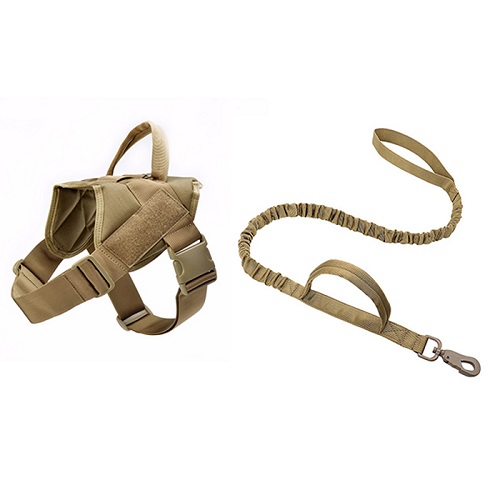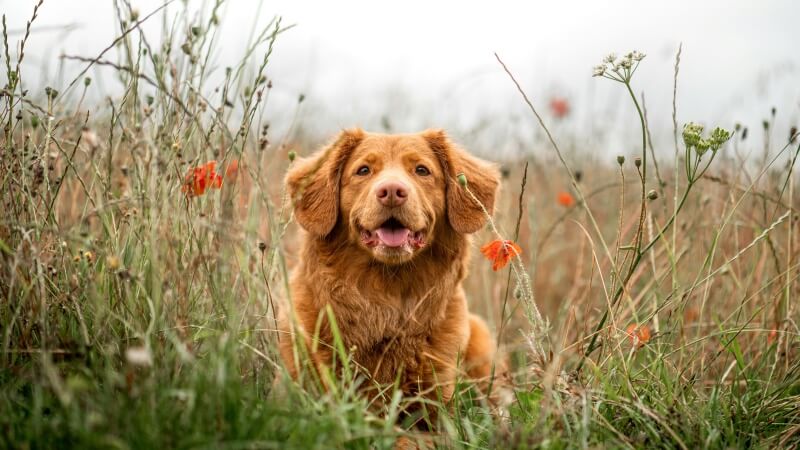
How To Craft A Cozy Cat Vest From Fabric Strips
Have you ever seen your feline friend lounging around and thought, “What could possibly make this picture more adorable?” The answer is simple: a cat

Incorporating a tactical dog harness into your pet’s routine can greatly enhance control and safety during outdoor adventures.
However, some dogs might experience allergic reactions to materials commonly used in harnesses.
Understanding the potential allergens, recognizing the symptoms of an allergic reaction, and knowing how to select the right harness can help keep your canine companion comfortable and happy.
Allergies in dogs can be triggered by several factors, ranging from environmental allergens to specific materials found in dog harnesses. Identifying the exact cause can be challenging but is crucial for preventing discomfort and health issues in your pet.

Contact Dermatitis: This occurs when a dog’s skin reacts to direct contact with certain materials, such as nylon or rubber, commonly used in a tactical dog harness.
Environmental Allergens: Pollen, mold, dust, or other environmental factors can adhere to the harness, causing allergic reactions when the dog wears it.
Food Allergies: Though less common in relation to harnesses, food allergies can cause skin reactions, making symptoms appear linked to the harness if the timing coincides.
Monitoring your dog for signs of discomfort or irritation is essential, especially after introducing a new tactical harness for dogs. Symptoms to watch out for include:
Selecting a tactical dog harness made of hypoallergenic materials can significantly reduce the risk of allergic reactions.
A natural fabric, cotton is soft, breathable, and less likely to cause irritation, making it suitable for dogs with sensitive skin.
This material is known for its hypoallergenic properties, resistance to bacteria, and comfort in various temperatures.
Some synthetic materials are designed to be hypoallergenic. However, ensure they are free of chemical treatments that can be potential allergens.
Opt for harnesses with coated or hypoallergenic buckles to prevent reactions to metals like nickel.
Even with a hypoallergenic tactical harness for dogs, taking additional preventative measures is advisable.
If, despite all precautions, your dog continues to show signs of allergies, alternative solutions may be necessary.
Some companies offer custom-made harnesses using the materials you specify. Though potentially pricier, this option ensures the tactical dog harness is completely safe for your dog.
In cases of severe allergies, a veterinarian might prescribe medications like antihistamines or corticosteroids to manage symptoms.
Comprehensive allergy testing can identify specific allergens, leading to more targeted prevention strategies.
This treatment gradually exposes your dog to small amounts of known allergens, aiming to decrease their sensitivity over time.
For the convenience of our readers, we’ve compiled a printer-friendly checklist that outlines the key steps in preventing allergies related to your dog’s tactical gear. Keeping this handy will ensure you’re always ready to provide the best care for your furry friend!
Q: Why is my dog scratching more than usual after wearing its new tactical harness for dogs?
A: It’s possible that your dog might be experiencing an allergic reaction to the material of the harness or environmental allergens that have clung to it. Check for other signs of allergies, and if the condition persists, consult your veterinarian.
Q: Can a tactical dog vest cause allergies, even if it’s not in direct contact with my dog’s skin?
A: Yes, a tactical dog vest can still collect environmental allergens such as pollen or dust, which can cause allergic reactions. Furthermore, the vest’s movement can create friction, leading to skin irritation in sensitive dogs.
Q: What materials should I look for when choosing a hypoallergenic tactical harness for dogs?
A: Hypoallergenic harnesses are often made from natural materials like cotton or bamboo fibers. Some synthetics are designed to be hypoallergenic as well, but ensure they are free from chemical treatments.
Q: How often should I clean my dog’s tactical dog harness to help prevent potential allergic reactions?
A: It’s recommended to clean the tactical harness at least once a week or more frequently if your dog has known allergies. After outings in high-allergen environments, it’s advisable to clean the harness immediately.
Q: Are there alternatives if my dog is allergic to every tactical harness we’ve tried?
A: Yes, you might consider custom-made harnesses that use specific, safe materials for your dog. Additionally, ongoing medical treatments, such as immunotherapy, can help reduce your dog’s sensitivity to certain allergens.
Utilizing a tactical dog harness doesn’t have to be a discomfort for your pet.
By understanding the potential causes of allergies, being vigilant about symptoms, and making informed choices about the materials and maintenance of the harness, you can ensure your dog’s comfort and health.
Remember, keeping an open dialogue with your veterinarian is crucial if any signs of allergies emerge. After all, the well-being of your furry companion is what matters most, ensuring many more adventures together, free of allergy concerns.


Have you ever seen your feline friend lounging around and thought, “What could possibly make this picture more adorable?” The answer is simple: a cat

The moment you consider a dog hunting vest for your adventurous companion, you’re stepping into a world where safety meets functionality. This vest is not

The concept of a dog cooling vest is a game-changer for pet owners looking to enhance their dog’s comfort during those relentless summer days. Imagine

When you first consider crafting a tactical dog vest, it’s not just about embarking on a fun DIY project; it’s about ensuring your furry companion’s

Have you ever seen your feline friend lounging around and thought, “What could possibly make this picture more adorable?” The answer is simple: a cat

The moment you consider a dog hunting vest for your adventurous companion, you’re stepping into a world where safety meets functionality. This vest is not

The concept of a dog cooling vest is a game-changer for pet owners looking to enhance their dog’s comfort during those relentless summer days. Imagine

When you first consider crafting a tactical dog vest, it’s not just about embarking on a fun DIY project; it’s about ensuring your furry companion’s
Secure and Empower, Walk Responsibly
Copyright © 2025pettacticalharness. All Rights Reserved.